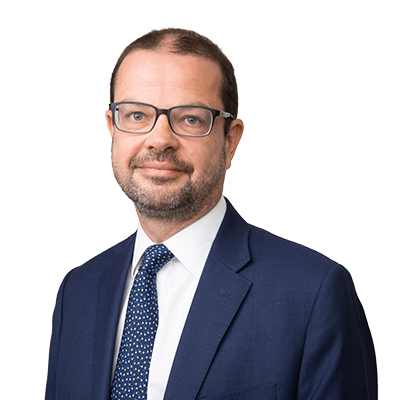
Clean sport: World Athletics strengthens anti-doping measures ahead of Paris 2024
Co-authored by Georgina Leith, Trainee Solicitor
As pre-Olympics momentum builds, World Athletics’ (WA) recent decision to introduce more stringent Out-of-Competition (OOC) testing for athletes from Brazil, Ecuador, Peru and Portugal demonstrates the willingness of global sporting administrators to ensure that the reputation of Paris 2024 remains untainted by doping scandal.
What is OOC testing?
OOC testing is an essential component of effective anti-doping regimes, ensuring that athletes practise clean sport and adhere to the World Anti-Doping Agency’s (WADA) World Anti-Doping Code (the WADC) during training and the off-season. Each of Brazil, Ecuador, Peru and Portugal were warned by the Athletics Integrity Unit (AIU) that their national OOC regimes implemented prior to the World Athletics Championships 2022 were insufficient but failed to make the necessary improvements in the run up to the World Athletics Championships 2023. As a result, the AIU made a recommendation to WA to impose stricter OOC testing regimes on athletes from these four federations.
The AIU is an advisory body which operates in tandem with, but separately from, WA. In a unique delegated structure, the AIU independently oversees the anti-doping arm of the sport’s governance, promoting transparency and protecting the credibility of athletics. Competitors from Brazil, Ecuador, Peru and Portugal hoping to represent their country at Paris 2024 will now have to conform with stricter testing requirements, including submitting to a minimum of three “no-notice” OOC tests. No-notice testing involves an athlete undergoing testing with little to no prior warning, wherever they may be at the time, and is designed to ensure that they are practising clean sport even when away from competitive scrutiny. To facilitate this, the AIU obligates the world-leading athletes selected for its Registered Testing Pool to submit, on a quarterly basis, details of a 60-minute daily time slot where they can be located and tested.
The Olympic and Paralympic anti-doping regime
The WADC mandates the practice of clean sport, both in and out of competition, throughout the Olympic cycle. As a further safeguard, each individual Olympic and Paralympic sport operates its own internal anti-doping governance, which is centrally overseen by the International Testing Agency (for the Olympics) and the International Paralympic Committee (for the Paralympics). This is a substantial financial commitment, with the total spend on anti-doping matters during an Olympiad by the Olympic Movement (the combined efforts of the International Olympic Committee (the IOC), the International Sports Federations and the National Olympic Committees) reaching around $260 million.
How are anti-doping allegations decided?
Anti-doping is a reputationally charged topic, with the damage wrought by a doping accusation or incident extending far beyond the penalties enforced. Decisions on alleged anti-doping rule violations during the Olympic Games are taken by the Anti-Doping Division of the Court of Arbitration for Sport (CAS), and sanctions placed on athletes can include the stripping of titles, fines and bans, as well as increased testing requirements upon their return to competition. National federations can also be subject to penalties and suspensions for failing to conform with anti-doping requirements.
CAS’ role in deciding and enforcing anti-doping regulations has recently been in the spotlight. On 5 March 2024, tennis player Simona Halep’s appeal against penalties levied on her for anti-doping violations was upheld, facilitating her return to competition at the 2024 Miami Open. Halep had initially been banned for four years after testing positive for a prohibited substance in 2022 and one other offence, but the CAS Panel’s decision reduced her suspension to 9 months, a period which had expired even before her appeal was commenced. Although Article 2 of the WADC imposes strict liability on athletes for the presence of a prohibited substance, a finding of “no fault or negligence” can serve to reduce the sanctions imposed. CAS utilised this scope of the WADC in reducing Halep’s ban, citing that her positive sample had arisen as a result of a contaminated supplement and therefore was not the result of an intentional infraction, but noting that she did not exercise sufficient care when using it.
Prioritising prevention
Where athletes are found guilty of doping offences, competition results are altered. However, the reallocation of Olympic medals is not automatic, with the IOC deciding on its approach on a case-by-case basis. In March 2023, the entire sets of London 2012 medals awarded in the women’s 20km race walk and 400m hurdles were reallocated following the disqualification of the winning athletes. Although some equilibrium is re-established by these decisions, there are things that can never be restored: Shenjie Qieyang and Lashinda Demus will never take the top step of the podium in front of the London 2012 crowd. The purpose of the global anti-doping regime is therefore, importantly, to act as a preventative measure rather than a cure.
A balancing act
Halep’s case demonstrates the flexibility which is often required in the enforcement of anti-doping regimes, taking into account the tension that can arise between the objective nature of a positive test and the subjective reality of an athlete’s intention, or lack thereof. However, preserving the fairness of world class sport remains the focus of global anti-doping regimes. The promotion of sporting integrity comes under particular scrutiny in an Olympic year, and governing bodies such as WA are demonstrating their willingness to step in and protect their sport’s reputation.
Sources




